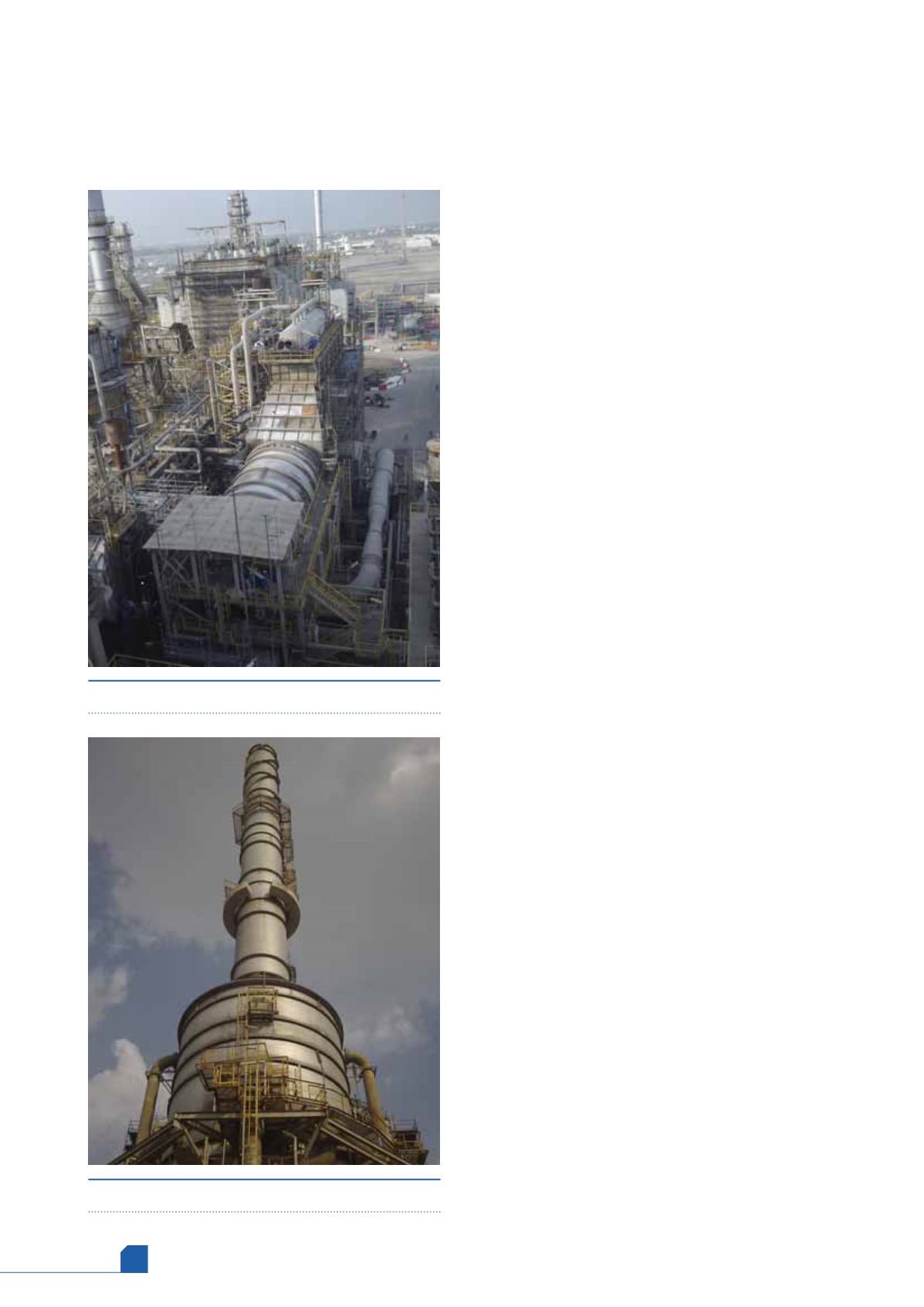
March
2017
HYDROCARBON
ENGINEERING
118
Hindi and Farsi, backed by an international team of experts.
Consequently, the high risk project at Sohar, which
achieved over 2.505 million safe man-hours, resulted in no
delays and no medical treatment.
The most recent turnaround took two months and
involved full access to the site, the opening of vessels,
replacing equipment, repairing pipelines and even carrying
out general maintenance tasks. The project witnessed
4288 pieces of equipment being maintained, which
included boilers, columns, pumps, piping, valves,
exchangers, vessels and instruments. The sheer volume of
this task could easily have ended in accidents, costly delays
and plant damage if not handled with the appropriate care.
For this reason, the company passed the management of
the project to RRC Middle East.
RRC was tasked with conducting the project’s health
and safety programme, during which it trained the
7223 contractors and staff at the refinery. RRC, which had
already managed the safety aspects of the turnaround for
ORPIC on two previous occasions, in 2009 and 2013,
deployed its team of Middle Eastern oil and gas HSE
practitioners.
The 2013 turnaround saw RRC manage the health and
safety aspects onsite for 46 days, during which time it
provided 10 competent oil and gas HSE practitioners to
cover the vast areas and numerous maintenance activities
required. There were over 3500 workers, all of whom
performed a variety of extremely high risk tasks, so RRC had
to provide safety induction training for the entire workforce.
The RRC team also had to conduct regular safety inspections
and spot checks to ensure that all safety rules were adhered
to and that the equipment was fully operational; risk-assess
work activities before issuing permits to work; and enforce
adherence to personal protective equipment (PPE)
requirements. The team was able to help ORPIC turn around
its site with no incidents and minimum loss to productivity.
The RRC team provided field management of all high
risk activities, starting from the planning phase through to
project execution, and the restarting of oil production at
the plant. During this process, RRC also trained all the
ORPIC contractors to work safely whilst the plant was in its
shutdown period. During its busiest periods, there were up
to 5737 contractor personnel on site at any one time.
As with any health and safety shutdown, safe working
practices were vital, especially as the contractors were
working on the refinery’s critical process areas containing
highly flammable hydrocarbons. This requires extra
knowledge and precautions necessary for working in a
potentially explosive atmosphere. It is also a legal
requirement to train workers in basic firefighting when
entering such a workplace, as well as those who are
working in a confined space, at height, or who have
responsibility for approving or receiving work permits.
In addition, equipment and process units designed and
built to run at normal conditions to process hydrocarbons,
such as pipes, vessels, pumps and exchangers, were opened
during the turnaround. As a result, workers enter areas that
are not designed for work and may contain specific hazards
that could be life threatening if the correct precautions are
not taken.
Training and education
As part of its training provision, RRC’s team examined the
role each worker and contractor had to undertake during
Figure 1.
The ORPIC site from above.
Figure 2.
Part of the ORPIC site.








